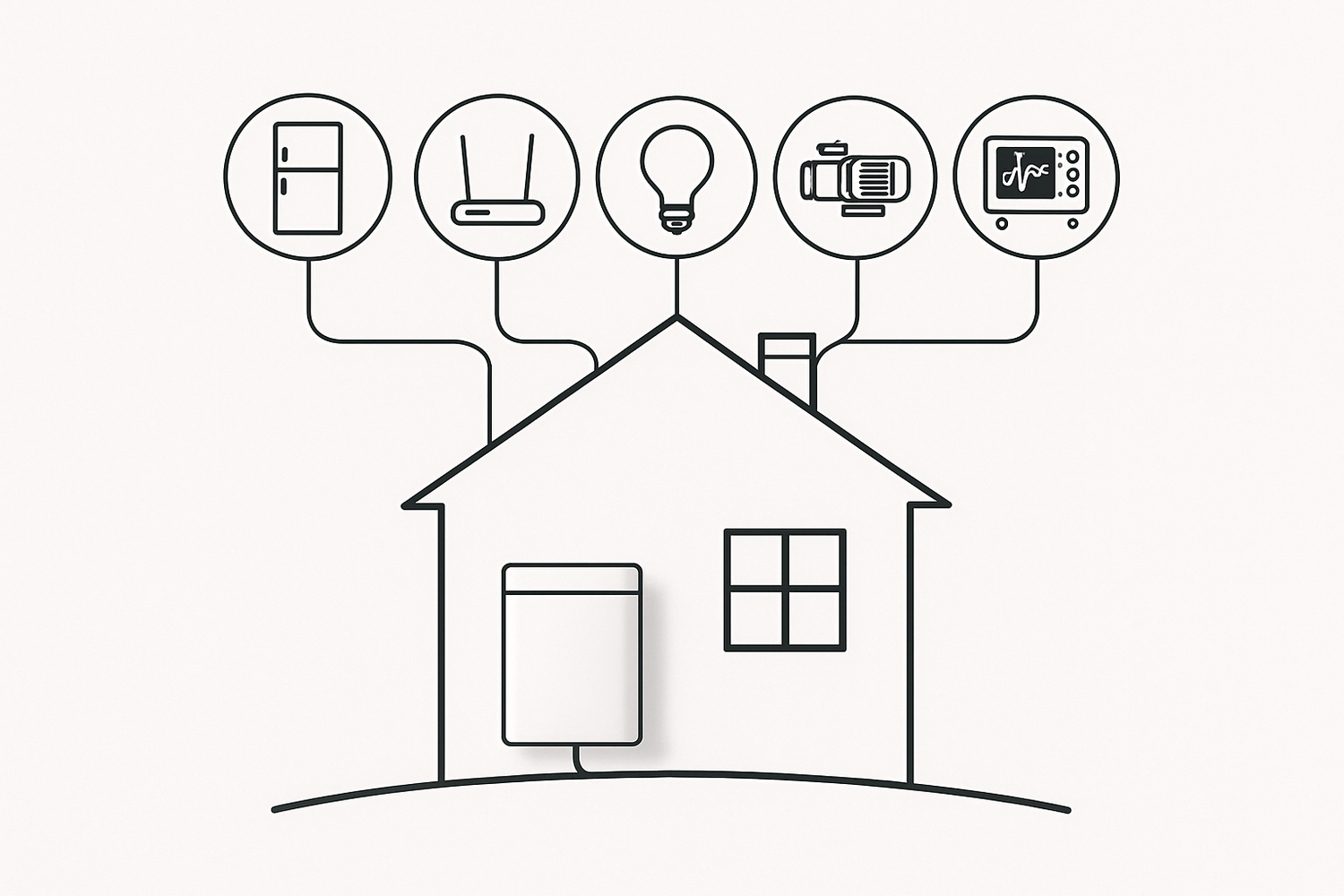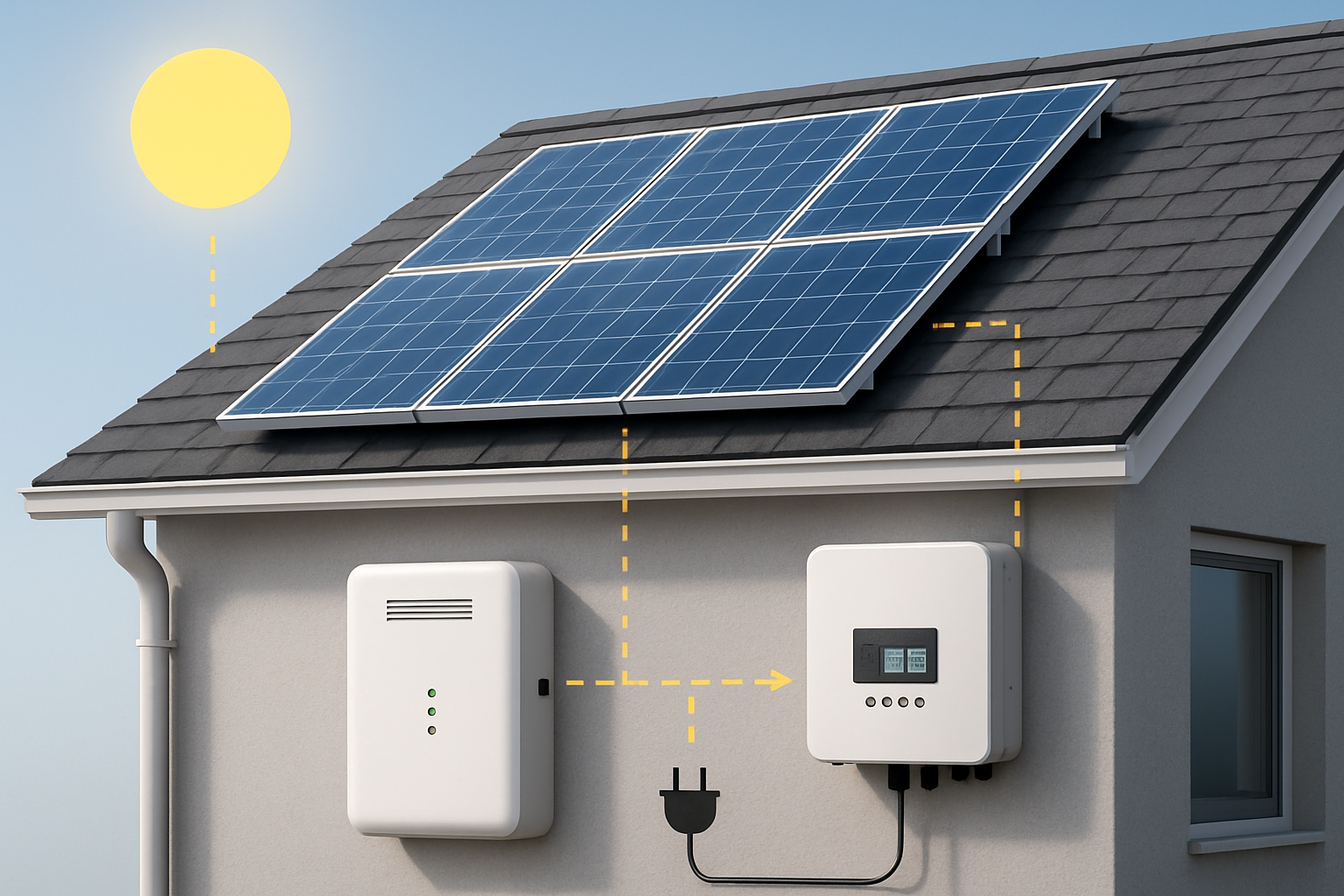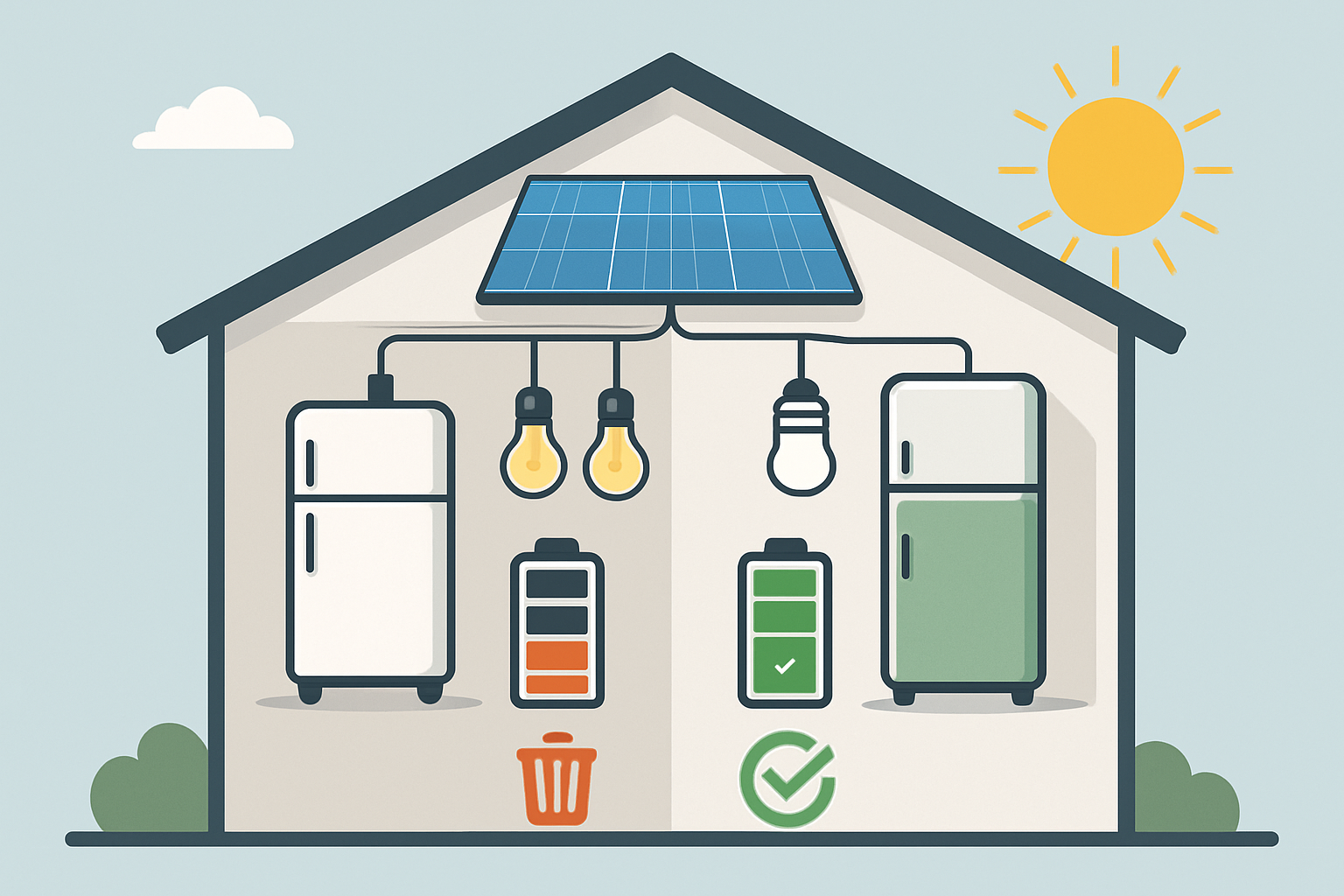An energy storage system offers more than just power; it provides security and peace of mind. When the grid goes down, it keeps your essential devices running. But which devices are truly essential? Effective planning is key to maximizing your backup duration. By identifying your 'critical loads,' you can design a system that delivers reliable power for what matters most, for as long as you need it. This process ensures your investment is both efficient and effective.
Understanding Your Power Needs: What Are Critical Loads?
Before sizing a battery or choosing an inverter, the first step is to analyze your own electricity consumption. This involves separating the absolute necessities from the conveniences. This prioritization is fundamental to designing a resilient and cost-effective backup power solution.
Defining Critical vs. Non-Essential Loads
Critical loads are the appliances and systems you cannot function without during a power outage. These typically include refrigerators, specific lighting, communication devices, and essential medical equipment. Non-essential loads are the power-hungry conveniences you can temporarily live without, such as air conditioning, dishwashers, and entertainment systems. Distinguishing between these two categories is the foundation of smart energy storage planning.
Why Prioritization Matters for Backup Duration
The amount of energy your battery can store is finite. The more devices you power, the faster that energy will be depleted. By focusing only on critical loads, you dramatically extend the runtime of your energy storage system. A battery that might power an entire home for a few hours could potentially support your essential needs for several days. This strategic approach is central to building a reliable backup system. As noted in the Electricity Storage Valuation Framework by IRENA, properly assessing system needs and usage patterns is crucial for determining the viability and value of an electricity storage project.
The Top 5 Critical Loads for Most Homes
While every household's needs are unique, a few critical loads are common across most residential settings. Focusing on these five areas will cover the most important aspects of safety, comfort, and communication during an outage.
1. Refrigeration and Food Storage
Protecting your food supply is a top priority. A modern refrigerator or freezer is surprisingly efficient, typically consuming 100-200 watts while the compressor is running. However, it cycles on and off throughout the day. Powering this appliance prevents hundreds of dollars in food spoilage and ensures you have safe food available during an extended outage.
2. Communication and Information
In an emergency, staying informed and connected is vital. Your modem and Wi-Fi router are low-power devices, often using just 10-20 watts combined. Keeping them online allows you to receive emergency alerts, contact family, and access information. Also, remember to include power for charging mobile phones and other personal devices.
3. Essential Lighting
Navigating your home in the dark is a safety hazard. Prioritize lighting in key areas like the kitchen, a bathroom, and a central hallway or living area. Modern LED bulbs are incredibly efficient, with a typical bulb using only 5 to 15 watts. Powering a handful of LEDs provides necessary visibility without significantly draining your battery.
4. Water and Sanitation (Well Pumps & Sump Pumps)
For homes with a private well, the well pump is a critical load for accessing water for drinking, cooking, and sanitation. These pumps can have a high power draw, sometimes exceeding 1,000 watts, especially on startup. Similarly, a sump pump is essential in areas prone to flooding to prevent water damage. These high-load items must be carefully factored into your system's design.
5. Critical Medical Equipment
For many, this is the most important load. Medical devices such as CPAP machines, oxygen concentrators, or home dialysis equipment are non-negotiable. The power requirements for these devices vary, so it is crucial to check the specifications and calculate their energy needs with a buffer for safety, ensuring uninterrupted operation.
How to Calculate Your Critical Load Requirements
Once you have identified your critical loads, the next step is to quantify their energy consumption. This calculation will help you accurately size your energy storage system for your desired backup duration.
Step 1: Create a Load Inventory
Walk through your home and list every appliance you deem critical. For each device, find its power consumption in watts (W), which is usually printed on a label on the back or bottom of the appliance or its power adapter. Create a simple list to keep track of this information.
Step 2: Calculate Total Wattage and Watt-Hours
Next, estimate how many hours per day each device will run during an outage. The total energy needed is measured in watt-hours (Wh). The formula is straightforward: Watts × Hours of Use = Watt-hours. For example, if a 150W refrigerator runs for a total of 8 hours a day (cycling on and off), its daily energy consumption is 1,200 Wh.
| Appliance | Power (Watts) | Daily Hours of Use | Daily Energy (Wh) |
|---|---|---|---|
| Refrigerator | 150 W | 8 hours (cycling) | 1200 Wh |
| LED Lights (5) | 50 W | 6 hours | 300 Wh |
| Modem & Router | 15 W | 24 hours | 360 Wh |
| Phone Charging | 10 W | 4 hours | 40 Wh |
| Estimated Daily Total | 1900 Wh |
Sizing Your Battery for Desired Backup Duration
Your total daily watt-hours is the target your battery must meet. To calculate the required battery capacity, use this formula: (Daily Energy Wh × Desired Backup Days) / Battery Efficiency = Required Capacity. High-performance batteries like Lithium Iron Phosphate (LiFePO4) offer excellent efficiency and a high depth of discharge. For a more detailed analysis of how different metrics impact system output, you can review this ultimate reference on solar storage performance.
Beyond the Basics: Planning for a Resilient System
A truly effective energy storage system involves more than just a battery. The inverter and the system's ability to scale are equally important components for long-term reliability.
The Role of a Hybrid Inverter
The hybrid inverter acts as the control center for your entire system. It intelligently manages the flow of power between your solar panels, battery, home, and the grid. Crucially, it provides the near-instantaneous switchover to battery power when an outage occurs. The importance of fast response times is increasingly recognized in grid standards, with reports like IRENA's Grid Codes for Renewable Powered Systems emphasizing millisecond-scale transfer capabilities for modern inverter-based storage.
Scalability and Future-Proofing
Your energy needs may change over time. Opting for a modular energy storage system allows you to expand your capacity by adding more batteries in the future. This scalability ensures your system remains a valuable asset for years to come. As energy markets evolve, flexible and adaptable storage solutions will become even more critical. Research from the IEA, such as the Projected Costs of Generating Electricity 2020, highlights that different storage technologies will serve various applications, making adaptable residential systems a smart investment.
A Smarter Approach to Energy Independence
Careful planning is the most critical part of designing an energy storage system that meets your expectations. By identifying and calculating your critical loads, you move beyond guesswork and build a solution tailored to your actual needs. This focused approach ensures that when the power goes out, you have a reliable, long-lasting source of energy for the things that matter most, giving you true energy independence and security.
Frequently Asked Questions
How long will a typical home energy storage system last during an outage?
This depends entirely on the battery's capacity and the loads you power. A system sized for critical loads like a refrigerator, lights, and a router might last 1-3 days, while powering an entire home might only provide a few hours of backup.
Can I add more batteries to my system later?
Yes, if you choose a modular and scalable system. Many modern LiFePO4 battery systems are designed for easy expansion, allowing you to increase your backup capacity as your needs or budget change.
What is the difference between AC-coupled and DC-coupled systems?
A DC-coupled system is generally more efficient for new solar-plus-storage installations, as the power goes directly from the solar panels to the battery without multiple conversions. An AC-coupled system is often easier to retrofit onto an existing solar panel setup.
Do I need a separate sub-panel for my critical loads?
In many cases, yes. An electrician will often install a separate sub-panel (or 'critical load panel') that connects your essential circuits to the energy storage system. This ensures that only these designated loads draw power from the battery during an outage.





Leave a comment
All comments are moderated before being published.
This site is protected by hCaptcha and the hCaptcha Privacy Policy and Terms of Service apply.